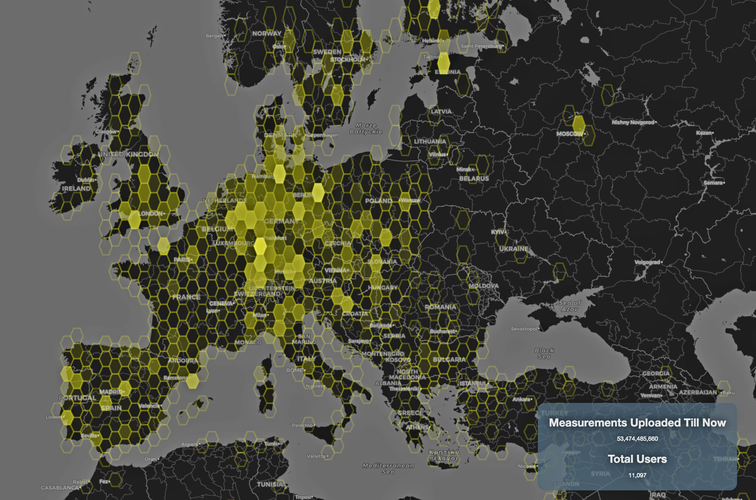More than 11 thousand people around Europe and the world have turned their smartphones into space monitoring tools by downloading the CAMALIOT app, so far delivering more than 53 billion measurements of meteorology and space weather patterns to researchers.
Leave it by your window each night with your satnav positioning turned on and your phone will record small variations in satellite signals, gathering data for machine learning analysis of The CAMALIOT app, developed through ESA’s Navigation Innovation and Support Programme (NAVISP) with the support of the Agency’s Navigation Science Office through its GNSS Science Support Centre is suitable for more than 50 Android models in the smartphone market which come equipped with dual frequency satnav receivers.
Satnav signals undergo delay and fading – known as ‘’scintillation’ – as they pass through irregular plasma patches in the ionosphere. This electrically charged upper atmospheric layer is continuously changing, influenced by solar activity, geomagnetic conditions and the local time of day. Dual frequency satnav receivers can compensate for this effect by comparing their two frequencies.
Then as these signals head downward to Earth they are also modified by the amount of water vapour in the lower atmosphere, helping to forecast rainfall in particular.
“Fixed satnav stations already monitor these effects, but these smartphone-based measurements are boosting our coverage hugely – we’re very gratified by all the support we’ve received,” remarks ESA navigation engineer Vicente Navarro. ”These results will then undergo a ‘Big Data’ machine learning analysis, seeking out previously unseen patterns in both Earth and space weather.”
Formally known as the ‘Application of Machine Learning Technology for GNSS IoT Data Fusion’ project, CAMALIOT is run by a consortium led by ETH Zurich (ETHZ) in collaboration with the International Institute for Applied Systems Analysis (IIASA).
The combination of GNSS data, smartphone access and machine learning in support of science is one of the priority research lines of ESA’s Navigation Science Office.



 Image:
Volunteers watching the skies
Image:
Volunteers watching the skies